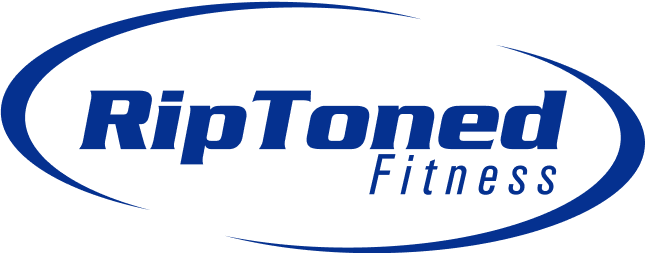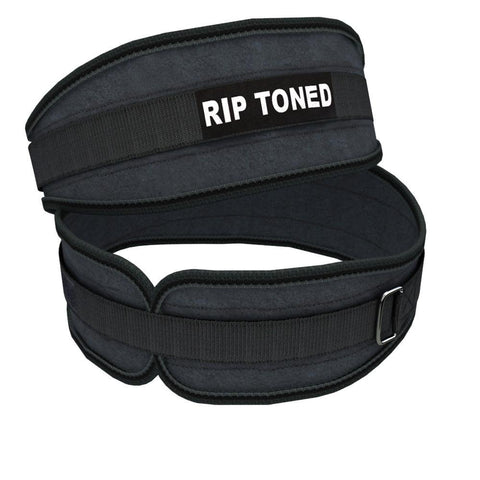A lifting belt, also known as a weightlifting belt or strength training belt, is an essential piece of equipment used by athletes and fitness enthusiasts during heavy weightlifting activities. It is worn around the lower back and abdomen to provide support and stability to the core muscles while performing exercises such as squats, deadlifts, and overhead presses.
In this article, we will discuss the purpose and benefits of a weightlifting belt, as well as how to choose the right one for your needs. We will also address common misconceptions surrounding lifting belts and their proper usage. So, whether you are a seasoned lifter or new to strength training, read on to learn more about this important piece of gear.
What is the Purpose of Lifting Belts?
The main purpose of lifting belts is to help support the core muscles and spine while performing heavy lifts. These lifts put a significant amount of stress on the body, particularly the lower back, which can lead to injuries if not properly supported. Lifting belts act as a stabilising force for the core by increasing intra-abdominal pressure, or pressure within the abdominal cavity. This pressure creates a more rigid and stable torso, allowing for better transfer of force from the legs to the barbell.
Lifting belts also help maintain proper form during lifts by limiting excessive arching or bending of the back. This is especially important for squats and deadlifts, which require a strong and stable core to perform correctly. Additionally, lifting belts can assist in preventing hernias and other lower back injuries by providing extra support to the abdominal wall.
Benefits of Lifting Belts
There are several benefits to wearing a lifting belt during heavy weightlifting activities. As mentioned, one of the main benefits is injury prevention. By stabilising the core muscles and spine, lifting belts can help reduce the risk of strains, sprains, and other lower back injuries.
Additionally, lifting belts can improve overall performance by allowing for better transfer of force from the legs to the barbell. This can lead to heavier lifts and increased strength gains over time. Lifting belts also promote proper form and technique, essential for maximising results and preventing injury.
Moreover, wearing a lifting belt can provide a psychological boost for lifters. Knowing that your core is supported and stable can give you the confidence to push through tough sets and reach new personal records.
What are the other misconceptions about lifting belts?
There are many misconceptions surrounding lifting belts, such as the belief that they weaken core muscles and hinder progress. However, research has shown that lifting belts do not decrease muscle activation in the core but increase it due to the added stability and pressure they provide.
Another misconception is that lifting belts should be worn at all times during weightlifting activities. While they can be beneficial for heavy compound lifts, wearing a belt constantly can lead to reliance on the belt and weakened core muscles.
It is also important to note that lifting belts are not a substitute for proper technique and training. They should be used to enhance performance and prevent injury rather than relying solely on them for support.
Additionally, some people believe that lifting belts are only for advanced lifters or bodybuilders. However, anyone who performs heavy weightlifting activities can benefit from a lifting belt, regardless of their fitness level.
And lastly, lifting belts are not one-size-fits-all. It is important to choose a belt that fits correctly and provides proper support for your body type and chosen exercises. Consulting with a fitness professional can help you find the right fit for your needs.
Does everyone need a lifting belt?
While lifting belts can be beneficial for many individuals, they are not necessary for everyone. Those who have existing injuries or conditions that affect their ability to lift should consult with a medical professional before using a lifting belt.
Additionally, those who primarily perform bodyweight exercises or light weightlifting may not need the extra support provided by a lifting belt. It is always important to listen to your body and make informed decisions about the use of equipment in your fitness routine.
Furthermore, proper technique and training should always be emphasised over-relying on equipment such as lifting belts. Strengthening core muscles through exercises like planks and Russian twists can also provide stability and support during lifts.
Plus, wearing a lifting belt for every exercise can lead to over-reliance and weak core muscles. It is important to use them appropriately for heavy compound lifts but not become dependent on them for every exercise.
Mistakes to avoid while using lifting belts
While lifting belts can provide many benefits, there are some common mistakes that individuals make when using them. One mistake is wearing the belt too tightly. This can restrict breathing and limit proper movement during exercises. The belt should be snug but not so tight that it cuts off circulation or causes discomfort.
Another mistake is wearing the belt too low on the waist. The belt should sit just above the hip bones to provide support for the lower back. Wearing it too low can lead to improper form and potential injury.
It is also important to remember that lifting belts are not meant to be worn all day long. They should be used only during weightlifting activities and then removed afterwards. Wearing them for extended periods can lead to reliance on the belt and weakened core muscles.
Lastly, using a lifting belt as a quick fix for poor technique is a mistake. Proper form and training should always be prioritised over-relying on equipment. Lifting belts enhance performance and prevent injury, not compensate for the lack of proper technique.
Is there an alternative to using a lifting belt?
While lifting belts can provide assistance and support during heavy weightlifting activities, they are not the only option for stabilising the core. Many fitness professionals recommend incorporating exercises that target the core muscles, such as planks, side planks, and Russian twists.
Using proper form and engaging the core muscles during lifts is crucial in preventing injury and maximising performance. Additionally, using tools like resistance bands or stability balls can provide added support and challenge for the core muscles.
For those who may not want to use a lifting belt or do not have access to one, it is important to focus on building a strong core through proper training and exercises. This will help not only with weightlifting activities but also with daily movements and overall stability.
Ultimately, the use of a lifting belt is a personal choice and should be evaluated based on individual needs and preferences. However, it is important to remember that they are not essential for everyone, and proper technique and training should always be prioritised.
Does the use of a lifting belt affect your strength gains?
The use of a lifting belt does not directly impact your strength gains, but it can indirectly affect them by providing support and stability. By keeping the core muscles engaged and stable during heavy lifts, a lifting belt allows for better form and movement patterns, which can lead to improved performance and potential strength gains.
However, relying solely on a lifting belt for support can also hinder strength gains. It is important to continue building core strength and proper technique in addition to using a lifting belt as a tool.
Additionally, overuse of a lifting belt can lead to reliance and potentially weaken core muscles. This can ultimately impact overall strength gains in the long run.
Ultimately, the use of a lifting belt should be balanced and used in conjunction with proper training and technique to see the best results in terms of strength gains. It is important to not become dependent on the belt and to continue working on building a strong core through various exercises.
How to choose the right lifting belt for your needs
Choosing the right lifting belt is crucial for maximising its benefits and avoiding potential issues. Here are some factors to consider when selecting a lifting belt:
- Material - Lifting belts can be made of leather, nylon, or other materials. Leather provides more support and durability, while nylon allows more flexibility and movement.
- Width - A wider belt can provide more support but may restrict movement in exercises like deadlifts or squats. It is important to find a width that works for your body type and chosen exercises.
- Buckle vs Velcro - Buckle belts allow for more precise adjustments, while velcro belts are easier to put on and take off. Consider which type of closure will work best for you.
- Fit - The belt should fit snugly but not too tight, and it should sit just above the hips to provide support for the lower back.
- Purpose - Some belts may be designed specifically for powerlifting or bodybuilding, while others are more versatile for different types of exercises.
Ultimately, the right lifting belt will depend on your individual needs and preferences. It is important to try different options and consider which features are most important for your fitness routine. Investing in a quality lifting belt can enhance performance and prevent injury during weightlifting activities. So, choose wisely according to your requirements and goals.
Tips for proper use and care of a lifting belt
To get the most out of your lifting belt, it is important to properly use and maintain it. Here are some tips to keep in mind:
- Use only when necessary - As mentioned before, lifting belts should only be used during heavy compound lifts or exercises that put a strain on the lower back. Wearing it for every exercise can lead to reliance and weakened core muscles.
- Adjust properly - The belt should be snug but not too tight, and it should sit just above the hip bones. Make sure to adjust it before each lift for proper support.
- Breathe correctly - It is important to continue breathing normally while wearing a lifting belt. Holding your breath can put unnecessary strain on the body.
- Clean and maintain - Regularly clean and maintain your lifting belt to ensure its longevity. Use mild soap and water to wipe it down, and avoid harsh chemicals that can damage the material.
- Replace when necessary - Over time, belts may become stretched out or worn down. It is important to replace them when necessary to maintain proper support and avoid injuries.
By following these tips, you can ensure that your lifting belt continues to provide the necessary support and benefits for your weightlifting activities. Remember, a lifting belt should enhance your performance and technique, not compensate for a lack of proper training and form.
FAQs
What is the main function of a weight-lifting belt?
The primary function of a weight lifting belt is to provide support to the lower back and increase intra-abdominal pressure during heavy lifting. This added support helps to stabilise the spine and reduce the risk of back injuries, allowing for safer lifting of heavier weights.
How do powerlifting belts differ from regular weightlifting belts?
Powerlifting belts are typically made of thicker, sturdier leather and often have a uniform width all around, providing maximal support for the back. They come in variations such as lever belts, which offer a quick-release mechanism for ease of use, and double-prong belts, known for their added security. These features make powerlifting belts specifically designed for lifting extremely heavy weights in powerlifting competitions.
Can wearing a weight belt help you lift more weight?
Yes, wearing a weight belt can help you lift more weight by improving your overall stability and giving you the confidence to perform lifts with heavier loads. The belt's ability to increase intra-abdominal pressure supports the spine, enabling better performance during weight lifting.
When should I consider using a weight-lifting belt?
Consider using a weight lifting belt when lifting weights close to your maximum capacity, especially during exercises that load the spine, such as squats, deadlifts, and overhead presses. A belt can be particularly useful for high-intensity training or powerlifting, where lifting heavy weights is a frequent requirement.
Conclusion
In conclusion, the use of a lifting belt can provide support and stability during heavy compound lifts and potentially enhance strength gains. However, it is important to not become dependent on the belt and continue working on building core strength through proper training and exercises.
When choosing a lifting belt, consider material, width, closure type, fit, and purpose. Proper use and maintenance of the belt can also contribute to its effectiveness and longevity. Ultimately, proper technique and form should always be the top priority in weightlifting activities, with or without a lifting belt.
Thanks for reading, and happy lifting! Keep those gains coming. Happy lifting!









